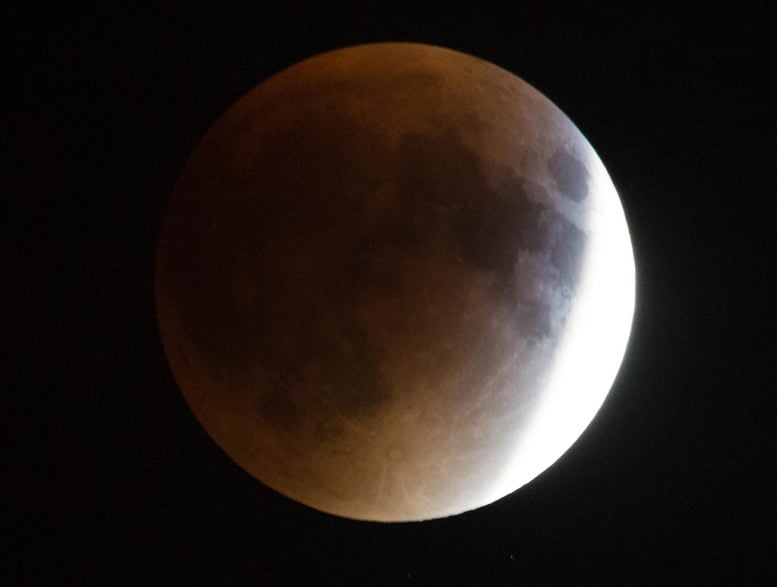
A perigee full moon, or supermoon, is seen during a total lunar eclipse on Sunday, September 27, 2015, in Washington, DC. The combination of a supermoon and total lunar eclipse last occurred in 1982 and will not happen again until 2033. Credit: NASA/Aubrey Gemignani
This Week’s Full Moon was the Flower, Corn Planting, or Milk Moon, Vesak or Buddha Purnima, a Lunar Eclipse, and a Supermoon.
The full Moon on Wednesday morning, May 26, 2021, appeared opposite the Sun in Earth-based longitude at 7:14 a.m. EDT. The Moon appeared full for about three days around this time, from Monday night through Thursday morning.
While this time was on Wednesday for most of the Earth, for Baker Island and the Pacific Ocean in the timezone just west of the International Date Line this will was before midnight on Tuesday morning. On the other side of the International Date Line, for the Pacific Ocean and islands that fall under Phoenix Island Time, West Samoa Time, and Line Islands Time, this was after midnight on Thursday morning.

A perigee full moon, or supermoon, is seen next to the Empire State Building, Sunday, September 27, 2015, in New York City. The combination of a supermoon and total lunar eclipse last occurred in 1982 and will not happen again until 2033. Credit: NASA/Joel Kowsky
The Moon was so close to opposite the Sun that it passed through the northern part of the shadow of the Earth for a total lunar eclipse. From the Washington, D.C. area, we could only see the barely-detectable start of the eclipse as the Moon sets. Viewing was higher in the sky across the U.S., Pacific Ocean, and Australia, occurring around moonrise from the eastern part of Asia.
One Moon, Many Names
In the 1930s the Maine Farmer’s Almanac began publishing American Indian Moon names for each of the full moons of the year. According to this Almanac, the Algonquin tribes of what is now the northeastern United States called this the Flower Moon for the flowers that are abundant this time of year. Other names include the Corn Planting Moon and the Milk Moon.
“This full Moon is a supermoon and is the closest full Moon of the year.” — Gordon Johnston
This full Moon corresponds to Vesak, also known as Buddha Purnima, and by other regional names. Vesak is a Buddhist holiday that commemorates the birth, enlightenment, and death of Gautama Buddha. The actual date of Vesak varies depending upon the lunar calendar in use in the particular country or region, but this year for most areas it falls on or near the day of this full Moon.
This full Moon is a supermoon and is the closest full Moon of the year, slightly closer than the prior full Moon on April 26, but only by about 0.04% of the distance from the Earth to the Moon at perigee.
Full Moons, New Moons, and Calendars
In many traditional lunisolar calendars, full Moons fall in the middle of the lunar months. This full Moon is in the middle of the fourth month of the Chinese calendar and Sivan in the Hebrew calendar. In the Islamic calendar, the months start with the first sighting of the waxing crescent Moon shortly after the New Moon. This full Moon is near the middle of Shawwal.
As usual, the wearing of suitably celebratory celestial attire is encouraged in honor of the full Moon.
Key Upcoming Celestial Events
Summer Solstice
As spring ends and summer begins, the daily periods of sunlight reach their longest on the solstice, then begin to shorten again. On Wednesday, May 26, 2021 (the day of the full Moon), morning twilight will begin at 4:38 a.m. EDT, sunrise will be at 5:47 a.m., solar noon will be at 1:05:10 p.m. when the Sun will reach its maximum altitude of 72.37 degrees, sunset will be at 8:23 p.m., and evening twilight will end at 9:33 p.m. The earliest sunrise of the year will occur at 5:42:11 a.m. on Sunday, June 13, with twilight starting at 4:30 a.m.
The summer solstice will be on Sunday night, June 20, at 11:32 p.m. June 20 will be the day with the longest period of sunlight, 14 hours, 53 minutes, and 41.6 seconds. On the day of the solstice, morning twilight will begin at 4:30 a.m., sunrise will be at 5:43 a.m., solar noon will be at 1:09:45 p.m. when the Sun reaches its maximum altitude of 74.56 degrees (its highest for the year), sunset will be at 8:37 p.m., and evening twilight will end at 9:49 p.m. By Thursday, June 24, (the day of the full Moon after next), morning twilight will begin at 4:31 a.m., sunrise will be at 5:44 a.m, solar noon will be at 1:10:37 p.m. when the Sun will reach its maximum altitude of 74.51 degrees, sunset will be at 8:37 p.m., and evening twilight will end at 9:50 p.m.
Solar Eclipse
There will be an eclipse of the Sun in the middle of this lunar cycle. On Thursday morning, June 10, 2021, the silhouette of the Moon will block part of the Sun. For parts of northeastern North America (including the Washington, D.C. area), Northern Europe, and Northern Asia, this new Moon will cause a partial eclipse of the Sun. From the Washington, D.C. area, the Moon will be blocking about 80% of the left side of the Sun as the Sun rises in the east-northeast at 5:42 a.m. EDT, causing the Sun to appear as a crescent. As the Sun and Moon rise together, the silhouette of the Moon will gradually shift off the Sun to the lower left, allowing more of the Sun to show until the eclipse ends around 6:29 a.m., when the Sun will appear about 7 degrees above the horizon in the east-northeast.
Please don’t try looking directly at the Sun to see this partial eclipse, you can damage your eyes! One safe way to observe a solar eclipse is to take two sheets of white paper, poke a hole in one, and let the sunlight pass through the hole to cast an image of the Sun on the second sheet of paper. The larger the hole, the brighter but less well-focused the image. When the Moon is blocking part of the Sun, causing the Sun to appear as a crescent, anything with small holes in it will cast shadows that look like crescents. Normally the dapples within the mottled shade cast by a tree will appear as circles, but during an eclipse, these dapples can appear as crescents.
Unlike other planets in our solar system, when we look at our Moon from Earth it appears to be almost the same size as the Sun. When the Moon is nearer to Earth and passes directly in front of the Sun it blocks the Sun completely, called a total solar eclipse. The only time it is safe to look directly at a solar eclipse is for the short period when the Moon is completely blocking the Sun. When the Moon is farther from Earth and passes directly in front of the Sun, it does not block the Sun completely. As the Moon and Sun line up, the Sun appears as a ring of fire around the silhouette of the Moon, called an annular solar eclipse. Since this eclipse occurs less than 3 days after the Moon was at its farthest from the Earth of this orbit, for an area running from a part of Canada, across the Northwestern part of Greenland, the North Pole, and onto part of Siberia, this will be one of these annular solar eclipses.
Summary of Evening Sky Events
On the evening of Wednesday, May 26, 2021 – the day of the full Moon – as evening twilight ends at 9:33 p.m. EDT, the brightest planet visible will be Venus, appearing only 1 degree above the horizon in the west-northwest. To the upper left of Venus will be the planet Mercury, appearing 3 degrees above the horizon. The planet Mars, slightly brighter than Mercury, will appear 23 degrees above the west-northwestern horizon. The constellation Ursa Major, also known as the Big Dipper, will appear in the north close to nearly overhead.
None of the 20 brightest stars will appear close to overhead. The highest bright star will be Arcturus, the 4th brightest star in our night sky, appearing 62 degrees above the southeastern horizon. Arcturus is about 37 light-years from Earth and nearly the same mass as our Sun, but older. Arcturus has used up its core hydrogen and become a red giant, swelling to about 25 times its previous size and shining about 170 times brighter than the Sun. Our Sun is about halfway through this lifecycle and is expected to become a red giant in about 5 billion years.
As the lunar cycle progresses, the planet Mars and the background of stars will appear to shift toward the west (although it is actually the Earth that is moving around the Sun toward the east). Mars will appear to shift more slowly than the stars (since Mars is moving the same direction we are). Low on the horizon on the west-northwest, the planet Mercury will also appear to shift slowly toward the horizon each night, while the brighter planet Venus (appearing as the Evening Star) will appear to move in the opposite direction, shifting higher above the horizon.
Mercury and Venus will appear closest to each other on the evening of May 28, 2021, less than half a degree apart and only 1 degree above the horizon at the time evening twilight ends, setting about 9 minutes later.
May 29, will be the last evening Mercury will appear above the horizon at the time evening twilight ends, although Mercury should continue to be visible about 30 minutes after sunset low on the west-northwestern horizon for the next 5 or 6 evenings (until about June 4).
The planet Mars will appear to pass near the bright star Pollux as May ends and June begins, with the pair appearing at their closest (a little over 5 degrees apart) on the evening of May 31.
On the evening of June 11, the thin, waxing crescent Moon will appear near the bright planet Venus low on the west-northwestern horizon, setting about 12 minutes after evening twilight ends. The next evening (June 12), the crescent Moon will have shifted to appear near the bright star Pollux, and the evening after that (June 13) near the planet Mars.
On the evening of June 15, the bright star Regulus will appear to the lower left of the waxing crescent Moon. On the evening of June 19, the bright star Spica will appear below the waxing gibbous Moon. The bright planet Venus as the Evening Star will appear to pass near the bright star Pollux in the latter part of June, appearing at their closest (a little over 5 degrees apart) on the evening of June 21. On the evening of June 22, the bright star Antares will appear below the waxing gibbous Moon.
By the evening of Thursday, June 24, 2021, (the day of the full Moon after next), as evening twilight ends (at 9:50 p.m. EDT), the brightest planet visible will be Venus, appearing as the Evening Star 4 degrees above the horizon in the west-northwest. To the upper left of Venus will be the planet Mars, appearing 10 degrees above the horizon. The bright star closest to overhead still will be Arcturus at 68 degrees above the horizon in the south-southwest.
Summary of Morning Sky Events
On the morning of May 26, 2021, (the day of the full Moon), as morning twilight begins at 4:38 a.m. EDT, the bright planet Jupiter will appear 29 degrees above the southeastern horizon with the fainter planet Saturn in the south-southeast at 31 degrees above the southeastern horizon. Two stars from the “Summer Triangle,” Deneb and Vega, will appear close to overhead. Closest to overhead will Deneb at about 78 degrees above the northeastern horizon. Deneb is about 2,600 light-years from Earth and is the 19th brightest star in our night sky. A close second with be Vega at just under 77 degrees above the western horizon. Vega is about 25 light-years from Earth and is the 5th brightest star in our night sky.
As the lunar cycle progresses, the background of stars and planets will appear to shift toward the west each morning. On the morning of May 30, 2021, Jupiter, Saturn, and the waning gibbous Moon will appear to form a line from Jupiter in the southeast to the Moon in the south.
By the morning of May 31, the waning gibbous Moon will have shifted to appear to the lower left of Saturn in the south-southeast. By the morning of June 1, the Moon will have shifted to appear below Jupiter in the southeast.
By the morning of June 2, the waning half-moon will have shifted to appear in a rough line with Jupiter and Saturn, from the Moon in the southeast to Saturn in the south-southeast. Beginning the morning of June 20, the planet Mercury starts appearing above the horizon about 30 minutes before sunrise (an approximation of when it may start being visible in the glow of dawn). Mercury will not start appearing above the horizon at the time morning twilight begins until July 1.
By the morning of June 24, 2021, (the day of the full Moon after next), as morning twilight begins at 4:31 a.m. EDT, the bright planet Jupiter will appear 39 degrees above the southeastern horizon with the fainter planet Saturn 33 degrees above the southern horizon. The bright star appearing closest to overhead will still be Deneb from the Summer Triangle, appearing about 78 degrees above the northwestern horizon. Mercury will not have risen yet but will rise in the east-northeast about 23 minutes later at 4:54 a.m. and may be visible for about 20 minutes before it is masked by the glow of dawn.
Daily Guide
Here is a more detailed, day-by-day listing of celestial events between now and the full Moon after next. Times are based on the location of NASA Headquarters in Washington, D.C.:
Even though they are not usually visible, I include in these Moon missives information about Near Earth Objects (mostly asteroids) that may pass the Earth within 5 lunar distances, because I find it interesting that we have discovered so many. In late May or early June 2021 (2021-May-25 09:26 UTC with 7 days, 17 hours, 11 minutes uncertainty), Near-Earth Object (2013 VO11), between 19 to 43 feet (6 and 13 meters) across, will pass the Earth at between 3.1 and 43.4 lunar distances (nominally 3.4), traveling at 22,800 miles per hour (10.18 kilometers per second).
May 25
Tuesday night, May 25, 2021, at 9:51 p.m. EDT, the Moon will be at perigee, its closest to the Earth for this orbit.
May 26
The next full Moon will be on Wednesday morning, May 26, 2021, at 7:14 a.m. EDT. There will be a total eclipse of the Moon, but in the Washington, D.C. area, only the barely detectable start of the eclipse will be visible as the Moon sets. Locations farther west will have better views. The Moon will appear full for about 3 days around this time, from Monday evening through Thursday morning.
Wednesday morning at 10:25 a.m. EDT (2021-May-26 14:25 UTC with 2 minutes uncertainty), Near-Earth Object (2021 JG1), between 96 to 214 feet (29 and 65 meters) across, will pass the Earth at 2.2 lunar distances traveling at 20,500 miles per hour (9.16 kilometers per second).
Wednesday evening at about 9 p.m. EDT (2021-May-27 00:59 UTC with 51 minutes uncertainty), Near-Earth Object (2021 KP), between 55 to 123 feet (17 and 38 meters) across, will pass the Earth at 1.6 lunar distances traveling at 25,000 miles per hour (11.17 kilometers per second).
May 28
On Friday evening, May 28, 2021, the planets Mercury and Venus will appear closest to each other, less than half a degree apart and only 1 degree above the horizon at the time evening twilight ends at 9:35 p.m. EDT, setting about 9 minutes later.
May 29
Saturday evening, May 29, 2021, will be the last evening Mercury will appear above the horizon at the time evening twilight ends. Mercury should continue to be visible about 30 minutes after sunset low on the west-northwestern horizon until about June 4.
Sometime Saturday night or Sunday morning, May 29 or 30, 2021 (2021-May-30 05:14 UTC with 11 hours, 37 minutes uncertainty), Near-Earth Object (2021 KM1), between 46 to 102 feet (14 and 31 meters) across, will pass the Earth at between 4.4 and 4.9 lunar distances (nominally 4.6) traveling at 8,200 miles per hour (8.11 kilometers per second).
May 30
On Sunday morning, May 30, 2021, the planets Jupiter and Saturn and the waning gibbous Moon will appear to form a line from Jupiter on the left in the southeast to the Moon on the right in the south.
May 31
On Monday morning, May 31, 2021, the waning gibbous Moon will have shifted to appear to the lower left of the planet Saturn in the south-southeast.
Monday evening, the planet Mars and the bright star Pollux will appear at their closest (a little over 5 degrees apart). The pair will appear near each other as May ends and June begins.
June 1
On Tuesday morning, June 1, 2021, the waning gibbous Moon will have shifted to appear below the bright planet Jupiter in the southeast.
Sometime around June 1, 2021 (2021-Jun-01 17:05 UTC with 19 hours, 12 minutes uncertainty), Near-Earth Object (2018 LB), between 55 to 123 feet (17 and 38 meters) across, will pass the Earth at between 0.9 and 7.2 lunar distances (nominally 2.9) traveling at 17,200 miles per hour (7.70 kilometers per second).
June 2
On Wednesday morning, June 2, 2021, the waning Moon will appear half-full as it reaches its last quarter at 3:24 a.m. EDT. The Moon will have shifted to appear in a rough line with the planets Jupiter and Saturn, from the Moon on the left in the southeast to Saturn on the right in the south-southeast.
June 7
Monday night, June 7, 2021, at 10:28 p.m. EDT, the Moon will be at apogee, its farthest from the Earth for this orbit.
June 10: Solar Eclipse
Thursday morning, June 10, 2021, at 6:53 a.m. EDT, will be the new Moon, when the Moon passes between the Earth and the Sun. As described above, the Moon will eclipse the Sun. Remember that it is unsafe to look directly at the Sun (unless you have special eclipse glasses to protect your eyes). Parts of Canada, Greenland, the Arctic Ocean, and Siberia will see an annular eclipse.
For much of the rest of northeastern North America, Greenland, Northern Europe, and northern Asia, this will be a partial eclipse. From the Washington, D.C. area, the Moon will be blocking about 80% of the left side of the Sun as they rise together in the east-northeast at 5:42 a.m., causing the Sun to appear as a crescent. As the pair rises higher in the sky, the silhouette of the Moon will gradually shift off the Sun to the lower left, allowing more of the Sun to show until the eclipse ends at around 6:29 a.m., with the Sun about 7 degrees above the horizon in the east-northeast.
On Thursday evening, the planet Mercury will be passing between Earth and Sun as seen from Earth – this is called inferior conjunction. Mercury will be shifting from the evening sky to the morning sky and will begin emerging from the glow of dawn on the eastern horizon after about June 20.
The day of – or the day after the new Moon – marks the start of the new month for most lunisolar calendars. The fifth month of the Chinese calendar starts on June 10, 2021 (at midnight in China’s time zone, which is 12 hours ahead of EDT). Sundown on June 10, marks the start of Tammuz in the Hebrew calendar. In the Islamic calendar, the months traditionally start with the first sighting of the waxing crescent Moon. Many Muslim communities now follow the Umm al-Qura Calendar of Saudi Arabia, which uses astronomical calculations to start months in a more predictable way. Using this calendar the eleventh month of the year, Dhu al-Qadah will begin at sunset on Thursday, June 10.
June 11
On Friday evening, June 11, 2021, the thin, waxing crescent Moon will appear to the lower right of the bright planet Venus on the west-northwestern horizon, setting about 12 minutes after evening twilight ends. Venus will likely be easier to spot in the glow of dusk than the thin crescent of the Moon.
June 12
On Saturday evening, June 12, 2021, the bright star Pollux will appear about 5 degrees above the waxing crescent Moon, with the bright planet Venus appearing about 8 degrees to the lower right of the Moon.
June 13
For the Washington, D.C. area (and similar latitudes, at least), the earliest sunrise of the year will occur on Sunday, June 13, 2021, at 5:42:11 a.m. EDT with twilight starting at 4:30 a.m..
On Sunday evening, the planet Mars will appear about 3 degrees below the waxing crescent Moon.
June 14
Monday, June 14, 2021, is the fifth day of the fifth month of the traditional Chinese calendar, the day of the Dragon Boat Festival.
June 15
Tuesday evening, June 15, 2021, the bright star Regulus will appear about 4 degrees to the lower left of the waxing crescent Moon.
June 17
On Thursday night, June 17, 2021, the Moon will appear half-full as it reaches its first quarter at 11:54 p.m. EDT.
June 19
Saturday evening, June 19, 2021, the bright star Spica will appear about 5 degrees below the waxing gibbous Moon.
June 20: Summer Solstice
Beginning the morning of Sunday, June 20, 2021, the planet Mercury will begin appearing above the horizon about 30 minutes before sunrise (approximately when it may start being visible in the glow of dawn). Mercury will not start appearing above the horizon at the time morning twilight begins until July 1.
Sunday night, at 11:32 p.m. EDT, will be the summer solstice, the astronomical end of spring and the beginning of summer. This will be the day with the longest period of daylight.
June 21
On Monday evening, June 21, 2021, the bright planet Venus (as the Evening Star) and the bright star Pollux will appear at their closest to each other, a little over 5 degrees apart. The pair will appear near each other during the latter part of June.
June 22
Tuesday evening, June 22, 2021, the bright star Antares will appear about 5 degrees below the waxing gibbous Moon.
June 23
Wednesday morning, June 23, 2021, at 5:56 a.m. EDT, the Moon will be at perigee, its closest to the Earth for this orbit.
June 24
The full Moon after next will be Thursday afternoon, June 24, 2021, at 2:40 p.m. EDT. The Moon will appear full for about 3 days centered on this time, from early Wednesday morning through early Saturday morning.

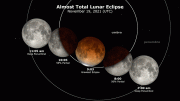
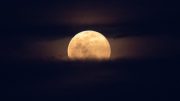
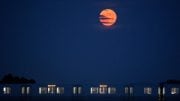
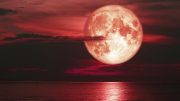

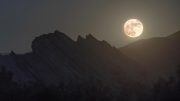

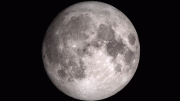
This isn’t serious astronomy, its akin to astrology, be gone, away with you.